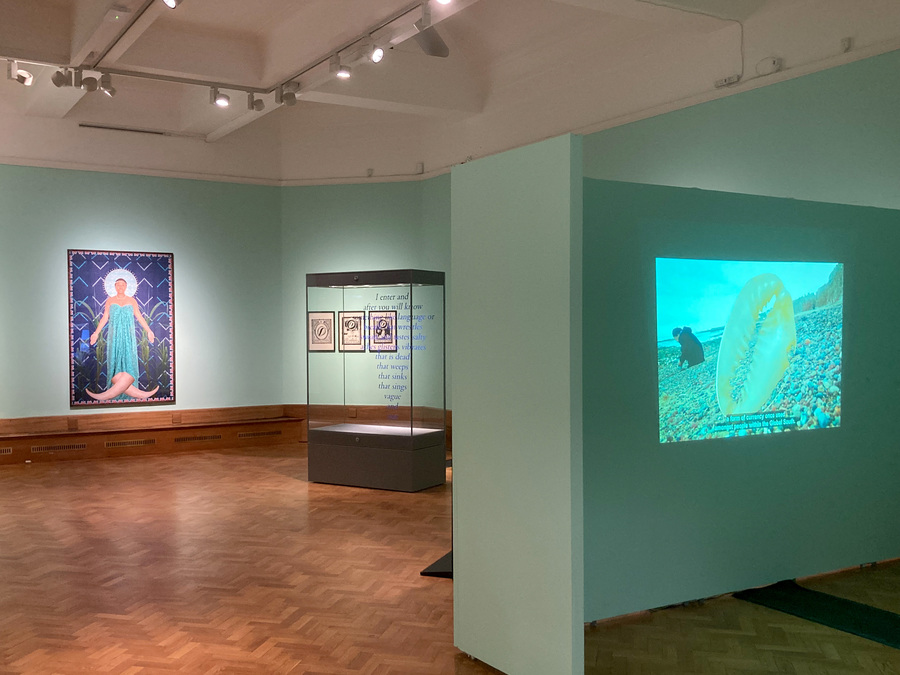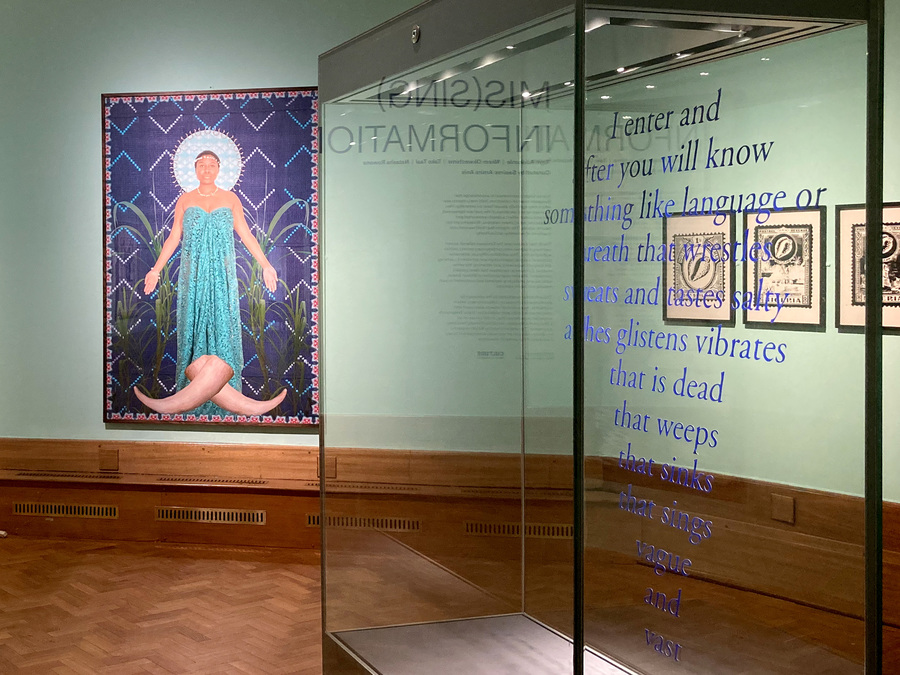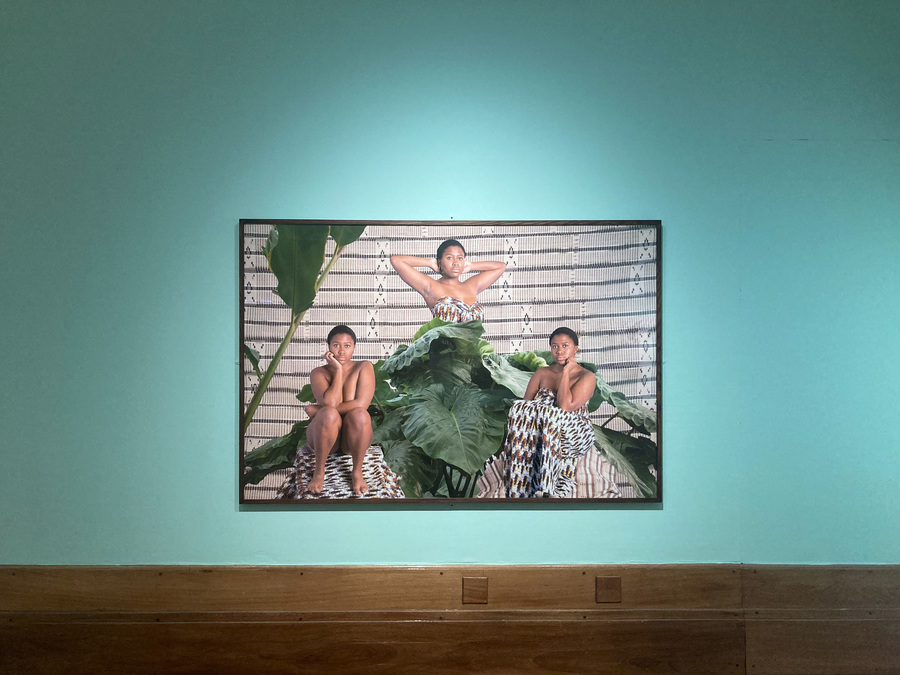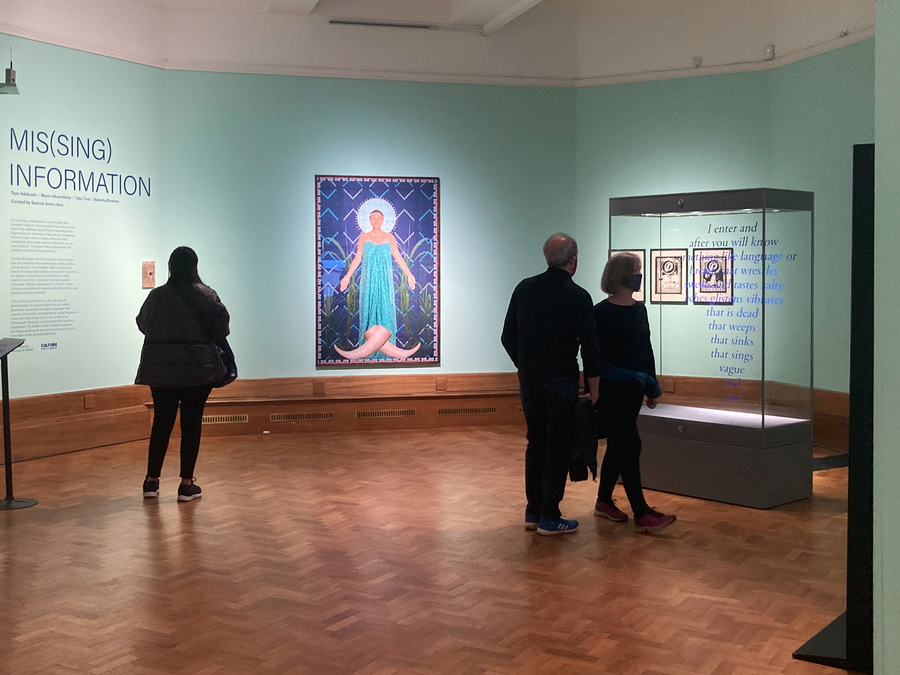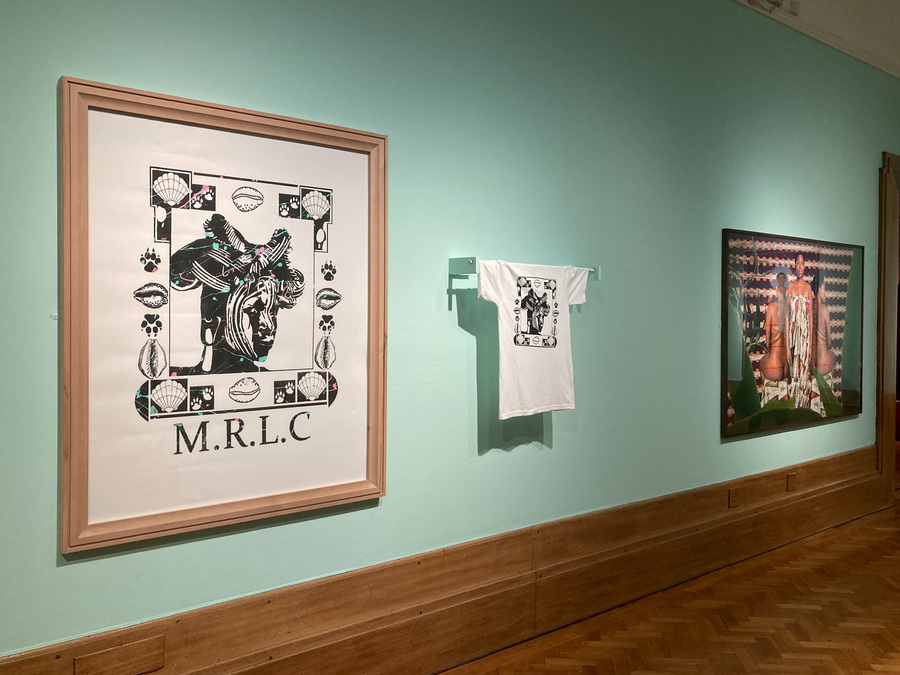Saoirse Amira Anis on new exhibition Mis(sing) Information
Saoirse Amira Anis, curator of Mis(sing) Information, discusses the exhibition which poses urgent questions about institutional misinformation, reparation and repatriation
Saoirse Amira Anis’ multifaceted and multidisciplinary practice extends into performance, installation, sculpture and writing, all of which demonstrate a joyful relishing of the relationship between movement, materials and memory. Nowhere is this more evident than in her striking sculptural installation We can still dance, where the artist is shown lost in movement, the mural inscribed with the empowering words ‘I am my own light and I will be magical on my own account’. This year, she’s turned to curating, with a group exhibition titled Mis(sing) Information at Perth Museum & Art Gallery, which builds on Anis’ desire to curate work by Black practitioners while also encouraging debate on the decolonisation of museums.
The exhibition features two films by artist and researcher Natasha Ruwona. Umbilic explores water as a method for recounting Black lives, touching on Ruwona’s research into hydrofeminism. The second film, if there were two moons..., reflects on how Blackness and Scottishness are considered mutually exclusive identities, and, in one of many "beautiful coincidences" that Anis describes, Ruwona’s cosmologies of the moon harmonise with the work of Tayo Adekunle, whose photograph Yemoja is named for an orisha (deity) who is linked to the moon and to water. Anis feels a particular personal affinity to if there were two moons... "In my own practice I do a lot of thinking about my own personal cultural heritage and an inner reconciliation of that, and a lot of the works really speak to the kind of things I consider in my own practice."
Tako Taal's audiovisual work DUMP_out through the mouth_ features a screenshot of a news broadcast about Glasgow University’s recent decision to give £20 million in reparations to the Caribbean to atone for the financial benefits it received from the slave trade. Taal’s contribution to the exhibition involved her undertaking research into archives belonging to the museum, which informed the work in the show. Her work is the source of an unnerving soundtrack that fills the entire space, pointing to the conditions that Black people and people of colour face in accessing museums and art spaces, where colonial legacies translate into hostile attitudes. Anis is clear that this exhibition is an "outward call for the repatriation of stolen objects; stolen in the strictest sense of the word, or objects that were 'sold and acquired legally’' – legally, but immorally." Much of the work in the exhibition points to processes of reparation and repatriation – from Adekunle’s images in Reclamation of the Exposition, which both adopt and mimic photographs of African women from the colonial archives, through to Nkem Okwechime’s reinterpretation of postage stamps from colonial-era Nigeria. The title of the exhibition alludes to these institutional failures, referencing at once the missing information that museums fail to bring to light and the misinformation they willingly sell to the public.
While Anis sees the show as being born out of these conversations about repatriation (that resurfaced as part of the widespread institutional interest in Black artists in the wake of the Black Lives Matter protests), she is also grateful for the space between 2020 and the opening of the show. The exhibition was postponed several times due to the pandemic, which, although frustrating at the time, proved to be beneficial as the exhibition could "stand in its own right and not get lost in all of the performative projects that museums were doing." We agree that while attention from the gallery and museum sector after the Black Lives Matter protests was welcomed, this sudden interest in the work of Black creatives felt reactive and tokenistic. While recognition of artists of African descent was long overdue, the hyper-visibility suddenly thrust upon Black people was challenging and alienating to confront, and this was compounded by the responses of the UK government and the far right.
Anis explains her frustrations at the failure of museums to be drawn into conversations around repatriation. "It feels quite transparent that it’s actually not that it’s too complicated, but that there are things they don’t want to share with the rest of us because they don’t want it to be held under public scrutiny any more than it already is. It's a way to maintain ownership, to maintain power by implying that ‘normal people’ don’t understand everything that goes into it." Anis has worked with and in a vast array of spaces in Scotland, but this is the first time she has worked in a more traditional, civic space. The formalities of working in such a historically-charged space were sometimes difficult to navigate, although she found great joy in having aesthetic agency over the exhibition, with the opportunity of ‘dressing a room’ being particularly influential on her own practice as an artist who works with installation. She explains the trajectory of her career and the turning point where she fully realised her commitment to working with Black artists and artists of colour.
"When I started at Generator Projects (an artist-led gallery in Dundee) I knew right off the bat that I was only really interested in working with Black artists and artists of colour," says Anis. "But I didn’t really feel confident in that desire, and so I tried to find ways around it – because I wasn't vocal about it, I was seeking out projects that would allow me to do that without actually saying this is what I want to do as a curator. Then A Quest That’s Just Begun happened [a group exhibition of 16 Black artists that took place in Dundee in the summer of 2020] and I was like, this is what I want to do – if I’m in the position of being able to curate a show, I want to use that opportunity to display the work of Black artists."
The fact that Anis is a practising artist herself has provided her with an insight into how practices of care and compassion should be woven into the curatorial process. "I’ve been involved in projects before where the gallery has got my work, but they don’t necessarily care about me… so I’ve really tried to make sure that the artists felt involved in the whole process. This was an opportunity for me to practise these gestures of care in an artistic professional context – which is not something radical, but it definitely isn’t standard either."
These practices of care are particularly important when working in spaces whose histories are built on colonialism and extortion, and that continue to perpetuate these histories. The act of inviting artists from marginalised communities into white institutions can often create conditions for harm. Anis speaks further about this, reflecting on her experience as a Black artist and curator working in Scotland and her discomfort at being commissioned by white institutions. She feels that the first step galleries and museums can take to address these concerns is to recognise why Black artists are distrustful in the first place. Institutions should "make an active effort to be aware that we might not trust them for very valid and real reasons – you have to prove why we should trust you." Anis explains the changes she envisions: "to be able to go into a situation as a Black artist who’s been invited by a white person, and not have to wonder whether this is tokenistic or whether being selected for something is just on the basis of EDI (Equality, Diversity and Inclusion) optics. She calls for a heightened "awareness of the power dynamics of an entirely or majority-white institution working with a freelance Black artist, and for salaried employees to actively reduce the intensity of that power imbalance, and to be aware of the types of labour that are being asked of Black artists by majority-white institutions."
Mis(sing) Information is on show at Perth Museum & Art Gallery until 19 Jun
